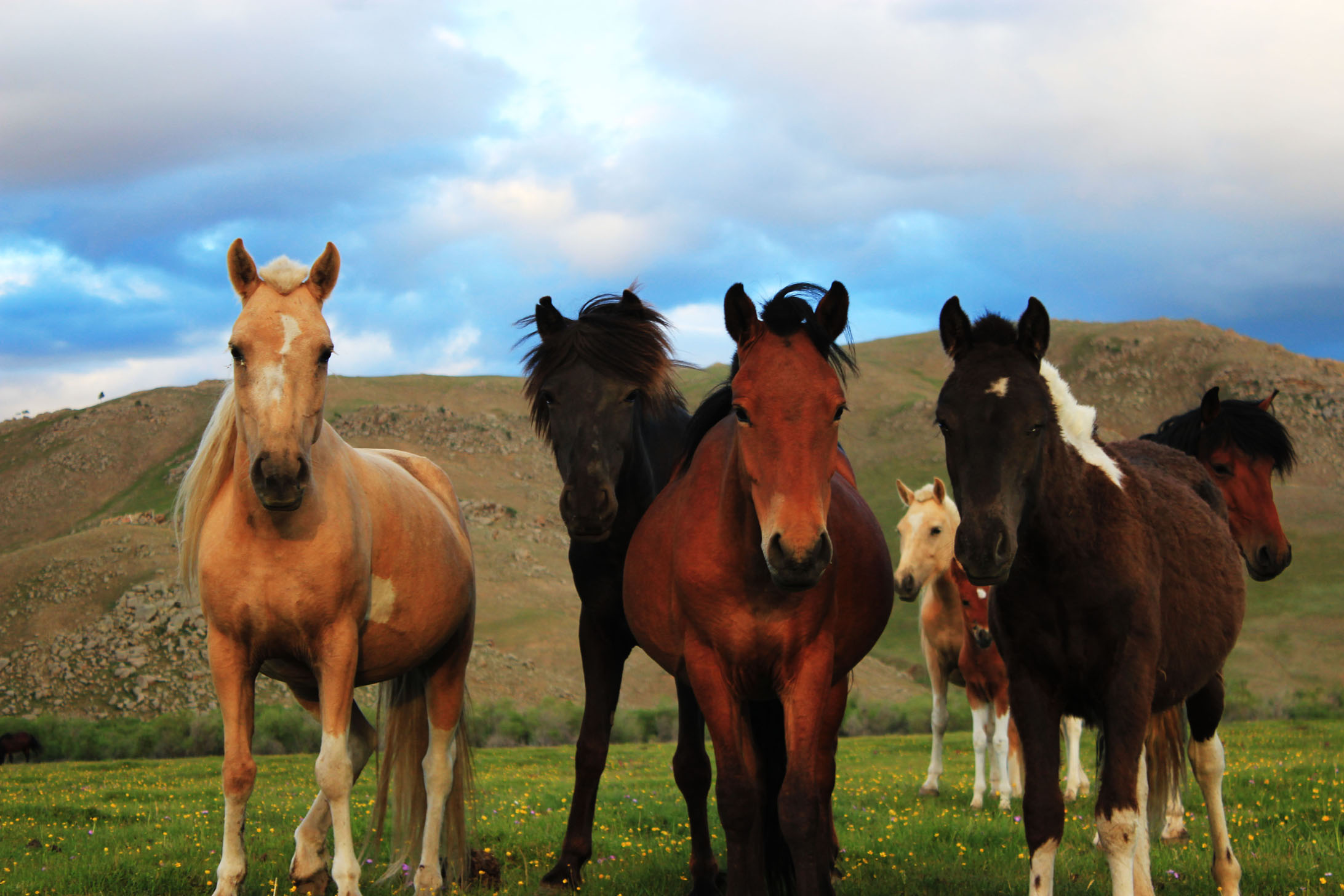
The steppe of Mongolia is the motherland of all of horses and asses as well, friendship of horse and humankind. Now you can see wild horses (takhi), in the Hustai National Park, which is the direct ancestor of all breed of horses, according to common belief. Hulan (wild ass) is direct ancestor of all asses in the Gobi. Most Mongolian horses that you will come across are ponies by European standards (less than 1.5 shoulder height) but these animals are really tough.
They have tremendous reserves of energy for work and can carry heavy loads for long periods. That is the reason why Chinggis Khaan’s cavalry was the most powerful in the world at one time. During the winter, Mongolian horses are not given any supplementary food by their owners and must therefore rely solely on their summer reserves and forage for what they can find under the snow.
The herding style of Nomads is different from Europe farming. Nomadic horses are in a semi-wild condition; they are allowed to go freely and find their food and protect themselves from predators. Prezewalski’s Horse (Equus ferus przewalskii or Equus caballus przewalskii) Most ‘wild’ horses today, such as the American mustang are actually feral animals, horses that were once domesticated but escaped and reverted to wild status.
The Przewalski horse has never been successfully domesticated and remains a truly wild animal today. The horse is named after Russian general Nikolai Przhevalsky (1839-1888). (The spelling of the horse breed as “Przewalski” derives from the polish spelling of name.) He was an explorer and naturalist who described the horse in 1881, after having gone on an expedition to find it based on rumours of its existence. Many of these horses were captured around 1900 by Carl Hagenbeck and placed in zoos. The native population declined in the 20th century due to a combination of different factors .The last herd was sighted in 1967 and the latest individual horse in 1969, in the Gobi Altai mountain range. In 1977, the foundation for the preservation and protection of the Przewalski horse was founded by Jan and Inge Bouman. They started a program of exchange between captive populations in zoos throughout the world to reduce inbreeding, later starting a breeding program of its own. In 1992, sixteen horses were released into the wild in Mongolia. This reintroduction scheme was successful and now there are around 400 of horses in the Hustai national park and Tahiin Shar Tal Park.













